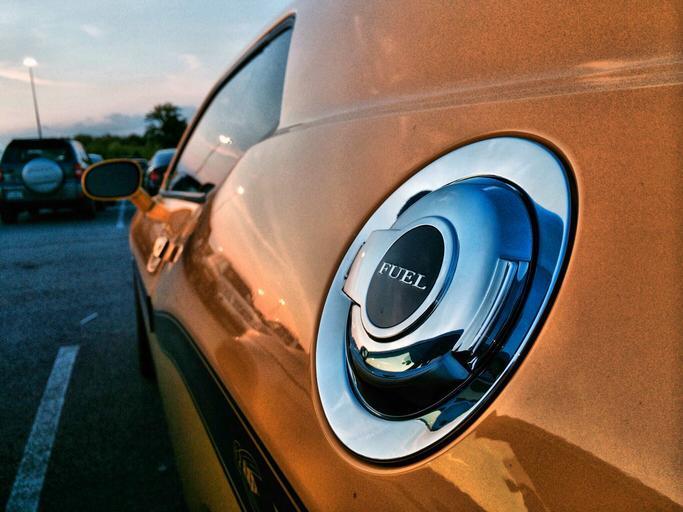
A loose gas cap is a sure way to lose value for the gas you have bought for your car. If you forget to replace it after refueling or if the gas cap is not tightened well, the check engine light in your car will come on.
However, after tightening it, how long until check engine light resets after loose gas cap?
It will take several minutes for the check engine light caused by a loose gas cap to reset after tightening it, therefore, you need to drive for 5 to 10 miles before the check engine light will reset.
Can I Get a Check Engine Light Because of a Loose Gas Cap?
Yes, you can get a check engine light warning when your gas cap is loose.
When the check engine light in your car comes on, it is normal for you to be worried and nervous. If you are driving, you might get scared or worried that your car may stop at any time and you will not be able to get to your destination.
There are many reasons that will cause the engine light to come on in your car. They are:
- Loose gas cap
- Mass airflow sensor failure
- Oxygen sensor failure
- Damaged or broken gas cap
- Worn out wire or spark plug
- Catalytic converter failure
- Vacuum leak
- Ignition coil failure
- Exhaust Gas recirculation valve
The next time the check engine light comes on, on your dashboard, you should check any of the above parts. Pullover on the road as soon as possible to check what is wrong with it.
In this article, we consider the relationship between a loose gas cap and a check engine light.
Since you now know that a loose gas cap can be the cause of the sudden presence of the check engine light on your dashboard, there are certain things you can do to confirm that the gas cap is actually loose.
Firstly, open the fuel door from inside your car and go down from the car. If you have a torchlight with you, take it along. If you don’t, no problem. It is only needed for you to properly inspect the gas cap for damages and breaks.
Then, take a diligent look at the gas cap. Check carefully for breaks, tears, chips, and cracks on it. If you observe any of this, it is obvious you need to replace it. It means your gas cap is bad.
A simple replacement of the damaged gas cap will solve your problem.
While checking for cracks, also inspect the seal in between the filler tube and the gas cap for cracks on it that might lead to a gas leak.
If you check properly and you cannot find any damage done to the gas cap, you need to install it back into the filler tube.
Do this by tightening the gas cap with your hand till you hear a click sound (signifying that the cap is firmly in place).
You need to be sure that it is firm, if it is loose and cannot be firmly tightened, you should replace it as soon as possible.
Once all this is done, the check engine light on your dashboard should go off as you drive. It might take several minutes to go off but if it was a loose gas cap that made it come on, it will definitely go off after some minutes.
How Long Until Check Engine Light Resets After Loose Gas Cap?
After tightening your loose gas cap or replacing a damaged gas cap with a good one, you will need to drive for some miles (5 miles to 10 miles) before it resets.
It might also take ten (10) to twenty (20) cycles to reset. A cycle is defined as the period between when a car is switched on and when it is turned off.
The check engine light will definitely not go off except if the loose gas cap has been replaced or tightened. You need to do this first. If you need to replace it, a new gas cap costs $15 at the automobile shop.
If it is still on, you need to check on other things that might cause the check engine light to appear. As mentioned above, it is not only a loose gas cap that will cause a check engine light to appear.
1. Faulty Airflow Sensor
The mass airflow sensor helps in determining the amount of air that flows into the engine. In the event that this sensor fails, you will encounter trouble starting the car.
As soon as the airflow sensor stops working, the check engine light will come on. A replacement for this sensor costs around $ 120 to $ 150.
2. Catalytic Converter Failure
The catalytic converter in an engine is the part that turns carbon monoxide into carbon dioxide. Its duty is to ensure that the engine operates in a normal fashion.
Catalytic converters can break though, you have the responsibility to prevent it from falling by performing regular maintenance on it as described in the owner’s manual of your vehicle.
Replacing the converter costs between $200 and $600.
3. Ignition Coil Failure
The mixture of air and fuel in a car’s engine is done by the ignition coil. Many cars nowadays have more than one coil in them, some cars have up to six or eight.
Once the coil is damaged, the check engine light will come on the dashboard. Luckily for us, the ignition coil is not difficult to repair.
3. Vacuum Leak
Dangerous emissions are reduced by redirecting the flow of fumes. This is done by the vacuum. If the vacuum has a leak, the check engine light will come on as well.
It is important you get it repaired as soon as possible to prevent other components of the engine from breaking down.
Will the Check Engine Light Go Off on Its Own?
You do not need to reset the code for the check engine light to go off. Once you have fixed the gas cap and sorted out all those other issues, the check engine light will go off as you drive.
You will need to drive for 5 – 10 miles sometimes before it goes but it will eventually go on its own.
However, if after driving for a long time and the check engine light refuses to go on its own, then you may have to scan and clear the error.
What are the Benefits of Tightening your Gas Cap?
There are many benefits of tightening your gas cap, they are:
1. Conservation of Gas
With a loose gas cap, you will lose some amount of gas in your fuel tank. But when you tighten it, your gas is conserved.
2. Increase in Fuel Economy
Because you have tightened your gas cap, the high fuel consumption or high gas mileage you observed with the loose cap will be no more.
3. Increased Performance
A loose gas cap makes the check engine light come on. With the check engine light on, cars are made to work in limp mode.
This mode effectively decreases the overall performance of the car but with a tightened gas cap, you have increased performance.
4. Prevents Gunk from Getting into the Fuel Tank
The original purpose of a gas cap is to keep dirt, dust, and other particles from getting into the fuel tank. With a tightened gas cap, your fuel tank is more secure from dirt.
5. Passing Emissions Inspections
A tightened gas cap increases the likelihood of your car passing the vehicle emissions inspections.
6. Increased Fuel Efficiency
With a tightened gas cap, your fuel will be consumed normally in the car with less evaporation or leaks.
Final Thoughts
Driving with a loose gap cap means you will experience more gas evaporation. This is not healthy for driving because the fuel efficiency will be low and dirt and other particles might get into the fuel tank.
The check engine light will come on as soon as the gas cap is loose or not in place at all. If it is loose, you need to pull over and tighten the gas cap. There is absolutely no reason why you should drive with a loose gas cap. Tighten it or replace it!










One reply on “How Long Until Check Engine Light Resets After Loose Gas Cap?”
[…] issues can range from minor problems like a loose gas cap to more serious engine malfunctions such as engine misfires caused by a bad spark plug, ignition […]
Comments are closed.